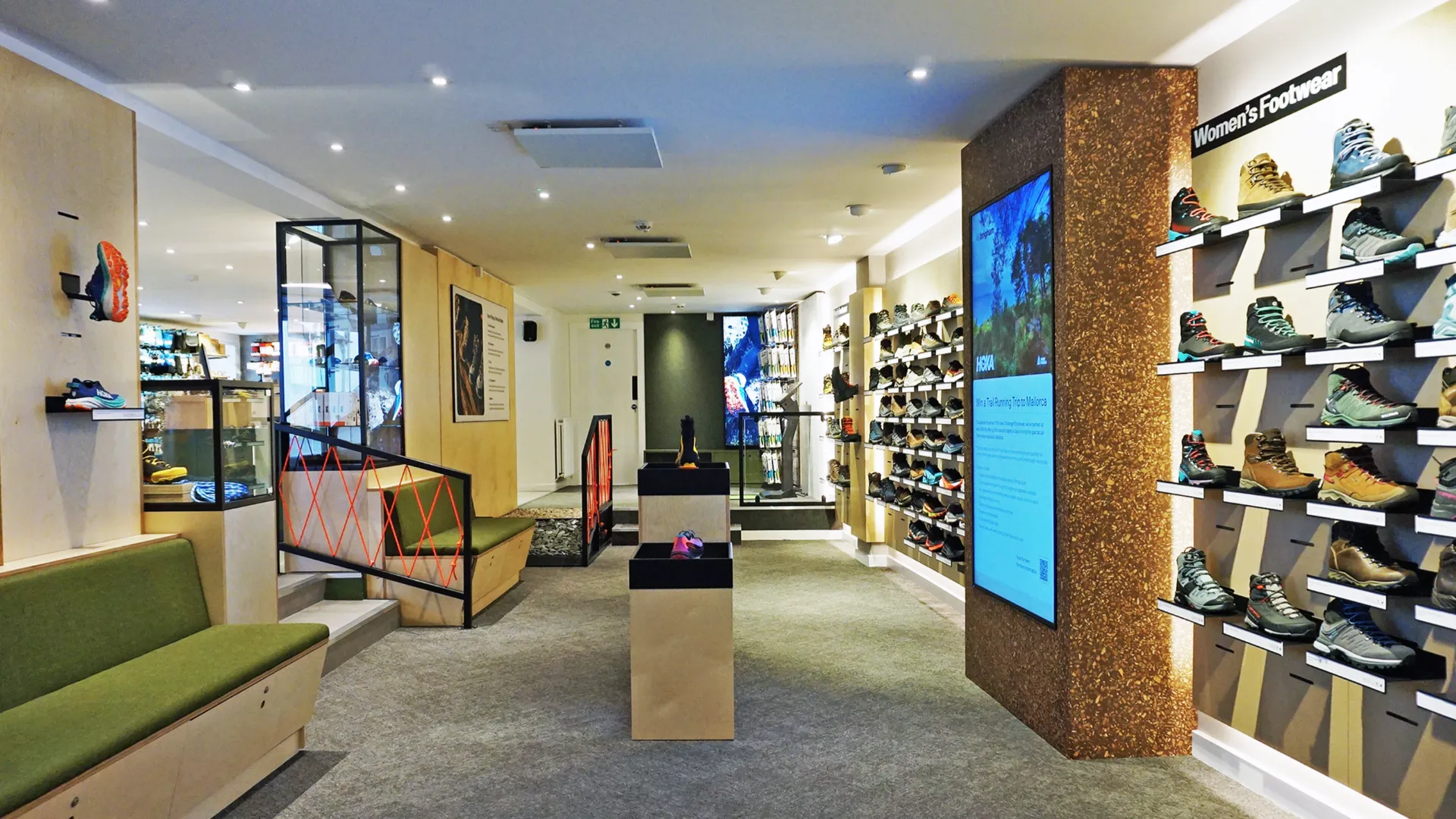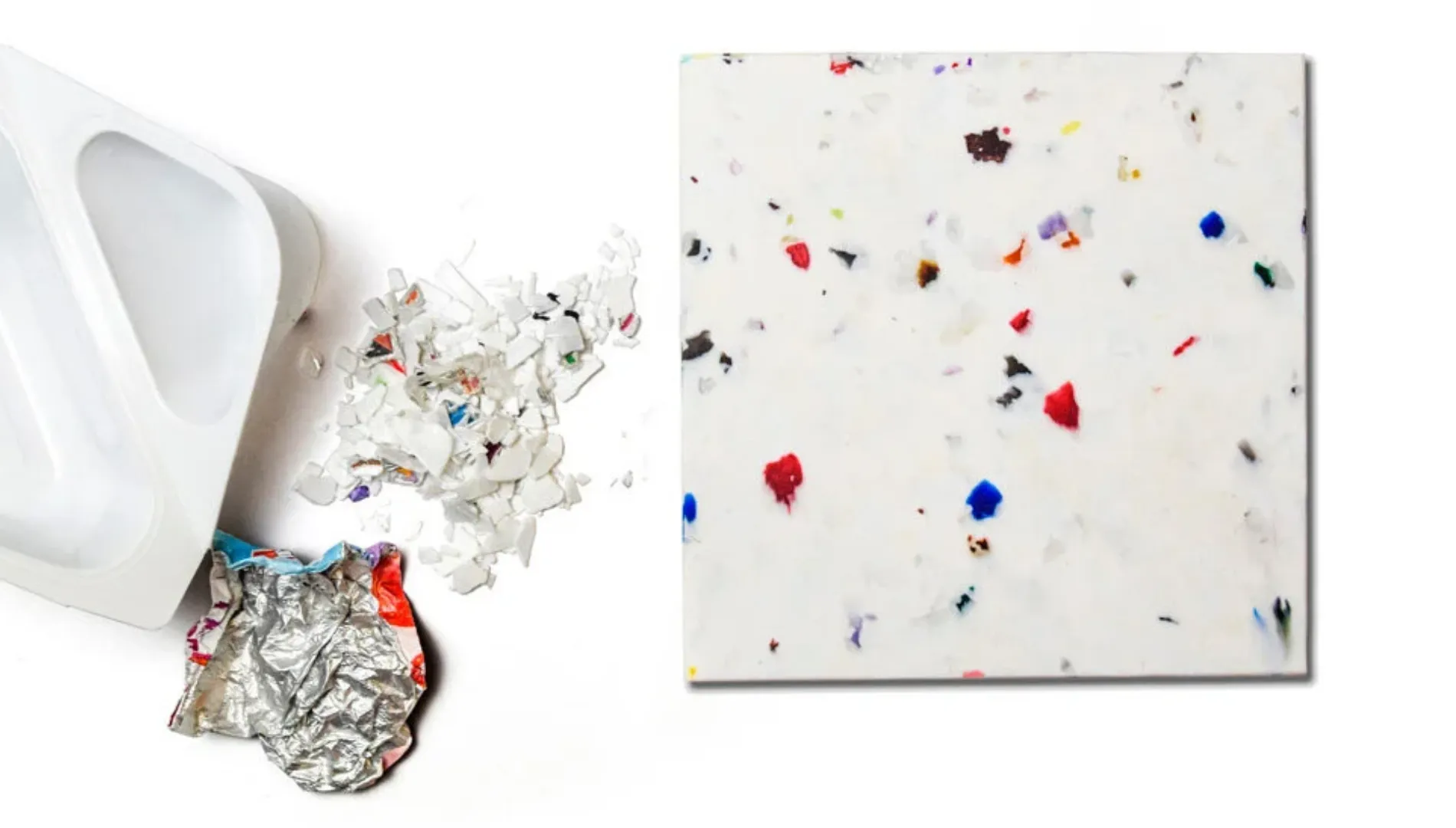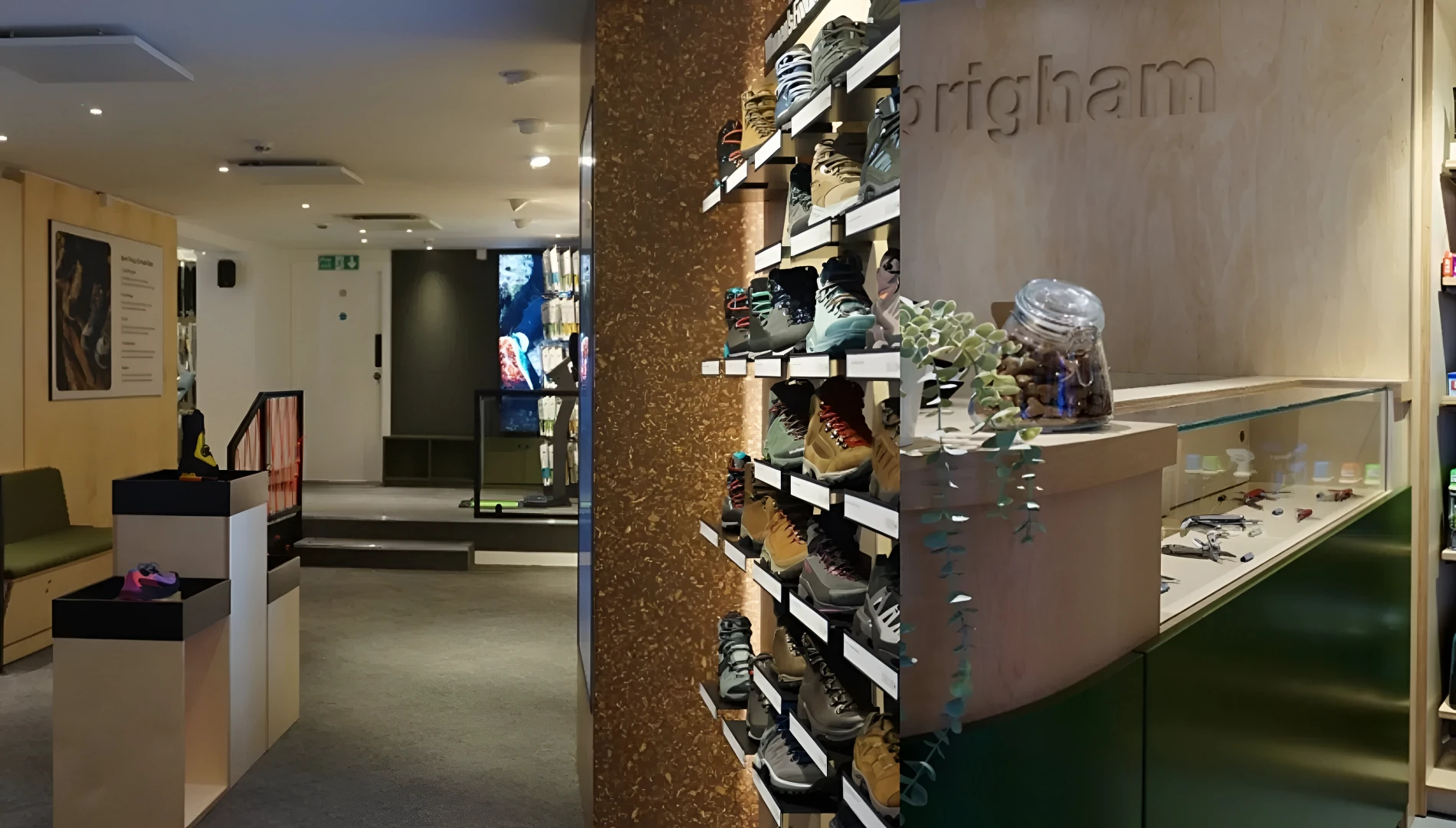

For the majority of retail projects, fit-outs are relatively short-lived, ripped out and replaced before materials have even begun to age. But for outdoor retailer Ellis Brigham, their new Keswick store signals a shift towards something more enduring: design that gives materials a second life.
At WDC Spaces, we see every project as an opportunity to rethink how interiors are made and remade and this store is an example of how sustainability and storytelling can coexist with commercial design.

We consider three principles:
1. Materiality
Designing with intent, recycling, storytelling, and durability of every material.
2. Reuse
Reimagining existing elements to reduce waste and reveal new potential in what already exists.
3. Longevity
Crafting interiors so they are built to last, are adaptable, and durable over time.
Instead of starting from scratch, we firstly looked at what could be saved. Reviewing Ellis Brigham’s other stores, working closely with the client and LEAP, we identified fixtures, gondolas, and even the cash desk that could be reused, repaired, or reimagined. The cash desk carcass for instance was given a new wrap in steel and given new purpose within the store’s fresh design direction.
By reusing rather than replacing, we saved nearly 40% of the project’s fixture costs but of equal importance, we saved materials from landfill and embedded the brand’s values of environmental responsibility directly into the fabric of the space.

We’ve experimented widely with carefully selected materials across retail and hospitality projects. In Ellis Brigham’s Keswick store, discarded coffee grounds were incorporated into a striking feature wall; plastic yoghurt pots and recycled wood chips created an inspiring sheet material, and we specified carbon negative carpet tiles and FSC Birch face plywood.
Ellis Brigham’s stores have always been grounded in a sense of place - mountain textures, natural tones, and tactile finishes that echo the landscapes their customers love to explore. This new location continues that lineage, but through a more sustainable lens.
Materials were chosen for both performance and inspiration: recycled surfaces like Smile Plastics, reclaimed timber panels, and metalwork designed for longevity. The second life story is woven subtly through the details, from patinated surfaces, to joinery that celebrates imperfection rather than hiding it.
It’s an aesthetic that feels authentic and quietly radical: a space that looks and feels like it belongs to the outdoors community, while taking genuine steps to reduce its environmental footprint. And working with reclaimed materials isn’t always straightforward. Finishes vary from batch to batch, but we embrace those differences as part of the design story. Durability is another factor: heavy-traffic spaces demand resilience, so sometimes we opt for new materials from suppliers whose sustainability values align with ours.

For our team, reuse isn’t a last-minute add-on - it’s built into our process from the very beginning of the project. Early collaboration between our designers, Ellis Brigham, and project partners ensured every decision was purposeful.
Working within a former furniture showroom, previously a series of connected cottages from a bygone era, required insight and agility. We assessed the location, layout, and operational needs to create a space that performs as well as it inspires. Selective demolition allowed us to open the entrance and draw the customer’s eye upward - creating a sense of arrival and flow through the store.
Where new materials were needed, we specified with intent: replacing worn carpet areas with durable new flooring, while retaining the original entrance tiles to preserve the building’s authenticity. The result is a space that feels both refreshed and rooted with the local community.
In a sector where change is constant, Ellis Brigham’s store stands as a quiet revolution and a retail space that chooses to reuse, rethink, and renew. It’s not just a sustainable design exercise, but a statement of intent: that commercial interiors can look forward by valuing what already exists.
Second life design is about giving materials, fixtures, and spaces the opportunity to evolve rather than end. We integrate this thinking from the very first client conversation, helping brands deliver interiors that inspire today and remain responsible for tomorrow.
Read more about this project in our work page or news article.
Created on
November 4, 2025
Last updated on
November 11, 2025